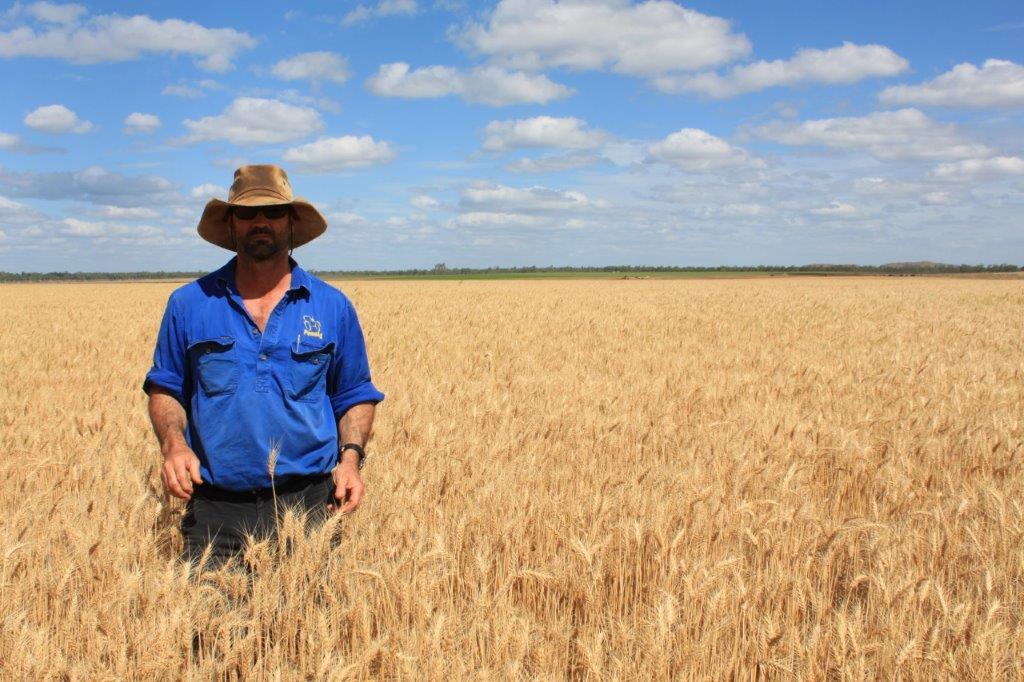Winter cereal cropping in northern Queensland has the potential to lift the total area planted to grain crops in Australia by as much as 50 per cent – from the 22 million hectares currently cropped to as much as 33 million hectares.
This is the finding of an Australian scoping study, as the United Nations’ (UN) Food and Agriculture Organization (FAO) predicts that the global population will increase 34 per cent to 9.1 billion by 2050.

To feed this population, the UN FAO estimates the annual global cereal crop will need to increase by one billion tonnes, and meat production will need to increase by 200 million tonnes.
The two-year scoping study identified 10 million hectares of black cracking clay soils (vertisols) in the Queensland tropics suitable for growing winter cereal crops, which have potential to help meet food security needs.
Most of this vast area is used for cattle grazing; it is estimated that less than one per cent is currently planted to grain crops. This highlights an opportunity to develop both feed grain and export industries, drawing on the state’s under-used land and water resources.
Leading the research, Dr Phillip Banks, plant geneticist from the Queensland Alliance for Agriculture and Food (QAAFI), found that feed wheat, milling wheat, triticale and forage oats could be successfully grown in northern and coastal Queensland.
Based on plant phenology (characteristics influenced by genetics and environment) and yield performance in winter cereal crop trials in 2008 and 2009, the research also identified that barley and durum wheat were less suited to the region’s tropical growing conditions. This research was funded by the Grains Research and Development Corporation and the Queensland Department of Agriculture and Fisheries (DAF).
Agronomic benefits of including cereals in tropical farming systems demonstrated in the trials included reduced nematode pressure, with a decline in the root-knot nematode (Meloidogyne species) in peanuts and the root-lesion nematode (Pratylenchus zeae) in maize, where these summer crops followed wheat in rotation.
Yield potential could also be higher than in some traditional growing areas because crops could be sown earlier in the tropics.
But sowing cereals too early – before late April – was found to reduce crop germination due to high soil temperatures at seeding. Sowing too late – after early May – tended to reduce yields because crops were exposed to hot conditions during the sensitive grain-fill period.
Overseeing wheat trials as part of the research, QAAFI wheat physiologist Dr Jack Christopher said wheat showed “the most potential as a prospective winter crop in the tropical north”.
In particular, wheat lines drawing on tropical germplasm sourced from the International Maize and Wheat Improvement Center (CIMMYT) were higher yielding than Australian wheat cultivars developed for subtropical and temperate growing conditions.
A range of CIMMYT experimental lines as well as CIMMYT heritage varieties, such as GBA Hunter and Zebu, yielded more than five tonnes per hectare.
Speaking at the 2016 Developing Northern Australia Conference in Darwin, Dr Christopher said the high yields achievable in wheat suggested winter cereals could be developed into a major industry in tropical Australia.
“Tropical Australian livestock industries provide a huge potential market for locally produced grain which would, for example, enable increased local beef cattle finishing for Asian markets, supplementary feeding of dairy cattle and provide a local source of grain during poor grazing periods,” he said.
Dr Christopher advocated a staged approach to the tropical industry’s development, with an initial, primary focus on establishing the feed-grain market to absorb strong demand from existing beef and dairy cattle markets.
Illustrating the incentive for farmers, he said the “infant wheat industry” in northern Queensland currently attracts a $100 per tonne price premium above Prime Hard milling grain prices in central and southern Queensland. This offsets the $100/tonne freight costs that northern cattle producers typically pay to bring feed wheat from central Queensland.
A second phase of the tropical industry’s advancement, winter cereal cropping could also be developed to supply flour milling export markets, he ventured. “The region’s proximity to major Asian noodle and bread wheat markets would also provide a competitive freight advantage,” he said.
Dr Christopher said the preliminary trials clearly showed that varieties and agronomic practices suited to southern and central Queensland would not provide optimal results further north. Further research was needed to identify crop genotypes best adapted to tropical conditions, including genotypes sourced from international breeding programs such as CIMMYT and the International Center for Agricultural Research in the Dry Areas (ICARDA).
New technologies developed for QAAFI’s winter cereal pre-breeding program could help speed up the delivery of optimal cultivars and agronomic management practices for the tropical north. Sophisticated pre-breeding technologies developed at the University of Queensland include rapid phenotyping, rapid screening for crop diseases and molecular markers.



